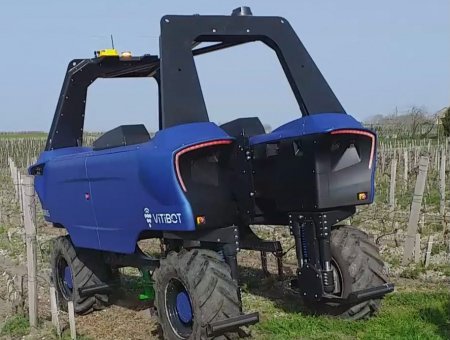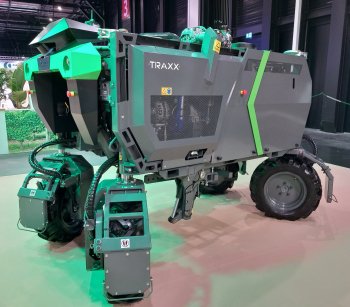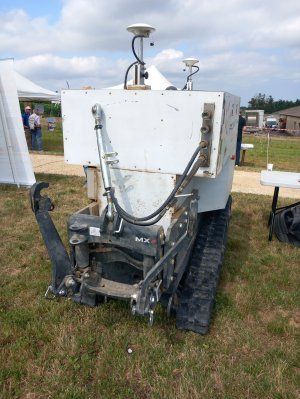Robot and autonomous tractor
Autonomous robots are becoming increasingly common in vineyards. They come in the form of tractors and (more compact) inter-row or high-clearance robots. Demonstrations have been multiplying over the last 5 years, and the range of equipment and its versatility is growing from one year to the next. Their arrival in the farming world is a veritable revolution, not only because they represent a new technology, but also because of the challenges they take up, such as the problem of manpower, sustainable practices and optimised productivity.

Autonomous robots in viticulture
They are available for two uses:- Single-row tractor robots:
Robust machines, often electric or combustion-powered, capable of high traction and tillage or spraying operations between the rows.

TRAXX autonomous straddle robot
- Inter-row robots:
More compact and lightweight, often electrically powered, they are often more versatile than stand-alone straddle tractors thanks to their lift arm and 3rd point. In fact, with these robots, you can use most of the equipment available in the vineyard, without any prior adaptation.

Autonomous inter-row robot ROMAXVITI
These machines are guided by centimetre-level RTK GPS, optical sensors, LiDAR or cameras, enabling them to navigate autonomously in the rows of vines after surveying the plots beforehand.
Main advantages
From a technical point of view
- Precision navigation (RTK GPS, semantic segmentation, LiDAR): stable trajectories in the rows with a centimetre error (±2 to 5 cm)
- Stability and precision make them highly effective tools in plots with variable topography, slopes and counter-slopes.
- Automation of various tasks: weed control, targeted spraying, tillage, pollarding, mowing, etc
- Low soil compaction thanks to reduced weight, particularly on tracked or inter-row models (often < 1 t)
From an ecological point of view
- Reduction or elimination of herbicides through precision mechanical weeding, improving soil biodiversity
- Zero or low carbon emissions from electric or hydrogen-powered models, with silent operation
- Saving resources: targeted treatments, fewer inputs, optimisation of work according to the real needs of each row
From an economic point of view
- Less manpower: less need for a driver, sometimes two robots supervised by a single person
- Lower operating costs: low maintenance, continuous software updates, long-life batteries (~2,000 working days)
- Indirect benefits: fewer uprooted vines, risk management on difficult slopes
Limits and weaknesses
From a technical point of view
- Work rate lower than a tractor because forward speed is often limited to around 5-6 km/h.
- Logistical complexity: transport to the plot, management of breakdowns and spare parts
- Obligatory surveying: requires rigorous initial parameterisation of each vineyard plot. This compulsory operation can be very time-consuming, depending on the size of the vineyard.
Ecological aspects / constraints
- Energy dependency: depending on the model, requires an electric terminal or hydrogen refuelling, autonomy reserve, etc
From an economic point of view
- Very high initial investment: between €30,000 for small inter-row robots, up to €200,000 for autonomous straddle tractors
- Uncertain profitability: high annual cost compared with a conventional tractor with driver
- Training and skills development required to manage robot configuration, updates and supervision
Autonomous robots and tractors in viticulture represent a technological revolution, driven in particular by French initiatives and companies. They offer significant benefits in terms of environmental sustainability, reduced drudgery, accurate crop data and a response to the problem of manpower availability. However, their high cost, the complexity of integrating them and the limited work rate remain obstacles, especially for small farms.
Robotics in winegrowing is therefore above all complementary to traditional mechanics: it can be used in demanding or arduous situations, freeing up working time, but it will not totally replace conventional tractors for high-speed operations over large areas.












